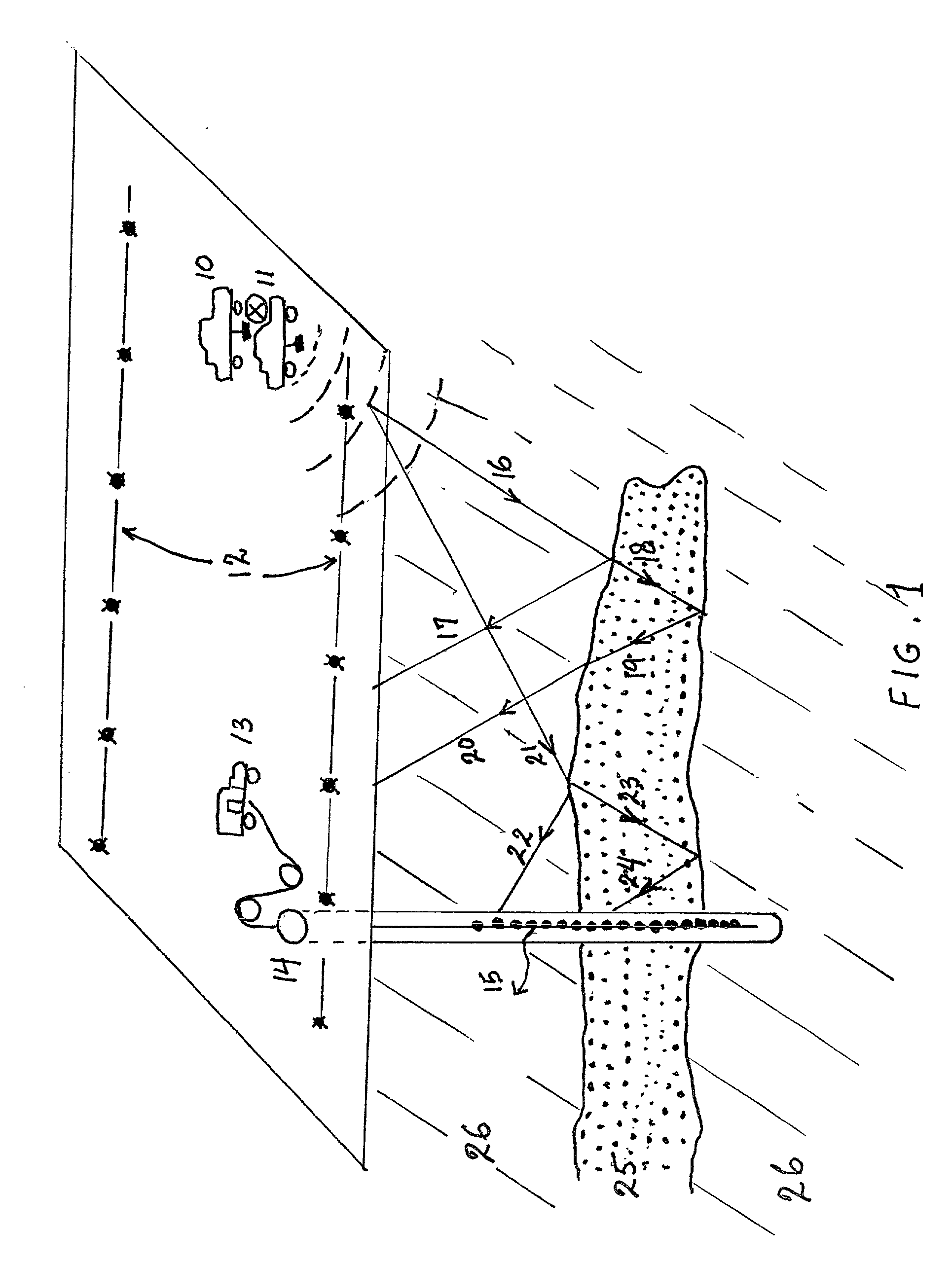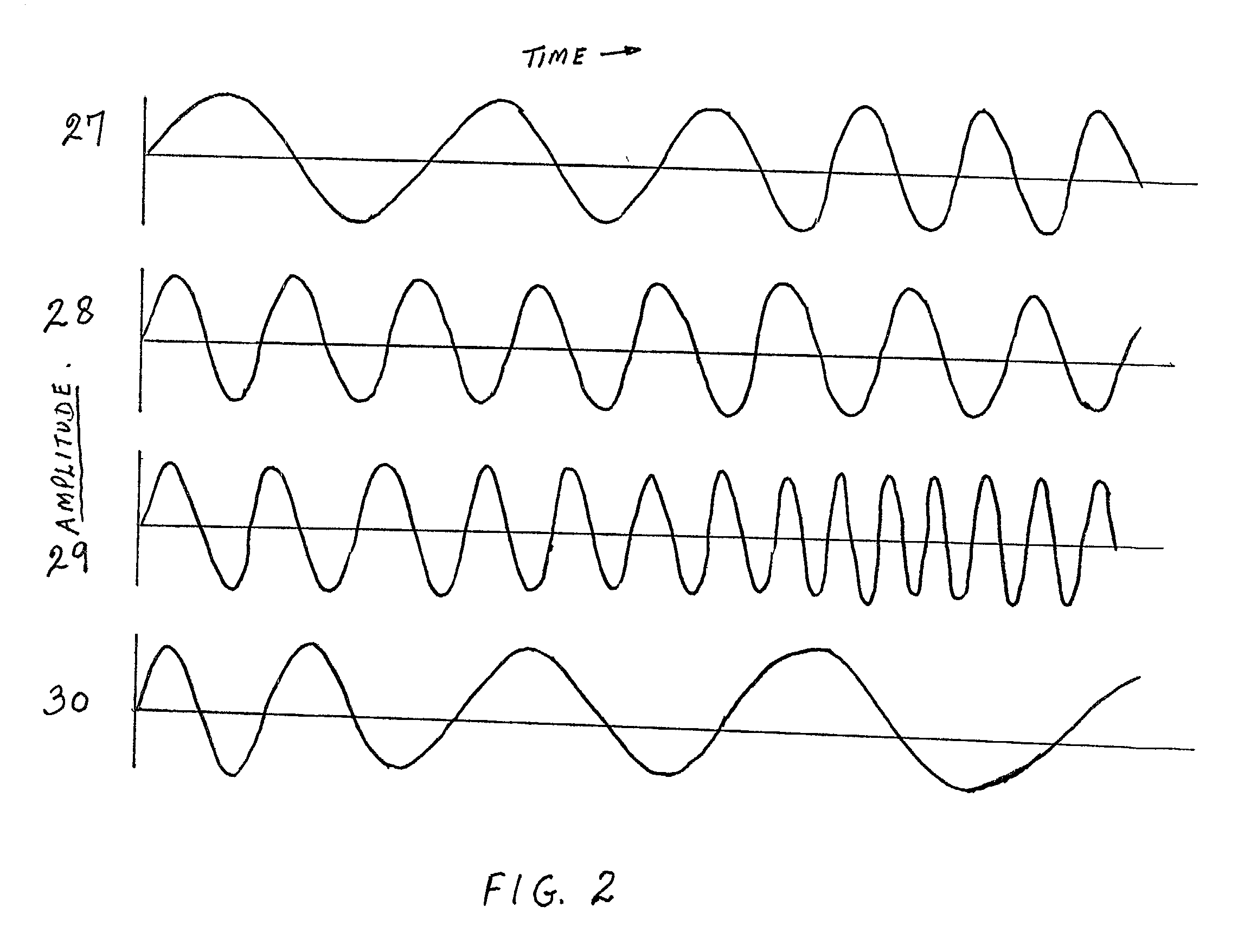Mapping reservoir characteristics using earth's nonlinearity as a seismic attribute
a technology of nonlinearity and reservoir characteristics, applied in seismic data acquisition, seismology for waterlogging, instruments, etc., can solve the problems of not being unique, ambiguous, and failing to identify the higher porosity
- Summary
- Abstract
- Description
- Claims
- Application Information
AI Technical Summary
Benefits of technology
Problems solved by technology
Method used
Image
Examples
Embodiment Construction
[0056] The vibratory sources currently used in the industry are designed to provide a linear and low distortion output signal. Based on this criterion, the swept frequency signal 27 and the mono-frequency signal 28 can be generated simultaneously by the same vibratory unit. To generate the combined-signal, the amplitude summation of the two signals 27 and 28 is required, which is known in the art. This combined signal is used as a pilot signal, and transmitted into the earth by using a single vibratory unit, thus increasing the operational efficiency of the field operation. During processing, using cross-correlation with 27 and the two sweeps 29 and 30, three sets of data are created as explained earlier in the description. These three sets of data are used for reflection imaging for normal 2-D and 3-D seismic and nonlinear seismic as explained earlier.
[0057] This invention provides us with a new method of recording seismic data from which two separate sets of data are created, one ...
PUM
 Login to View More
Login to View More Abstract
Description
Claims
Application Information
 Login to View More
Login to View More - R&D
- Intellectual Property
- Life Sciences
- Materials
- Tech Scout
- Unparalleled Data Quality
- Higher Quality Content
- 60% Fewer Hallucinations
Browse by: Latest US Patents, China's latest patents, Technical Efficacy Thesaurus, Application Domain, Technology Topic, Popular Technical Reports.
© 2025 PatSnap. All rights reserved.Legal|Privacy policy|Modern Slavery Act Transparency Statement|Sitemap|About US| Contact US: help@patsnap.com



